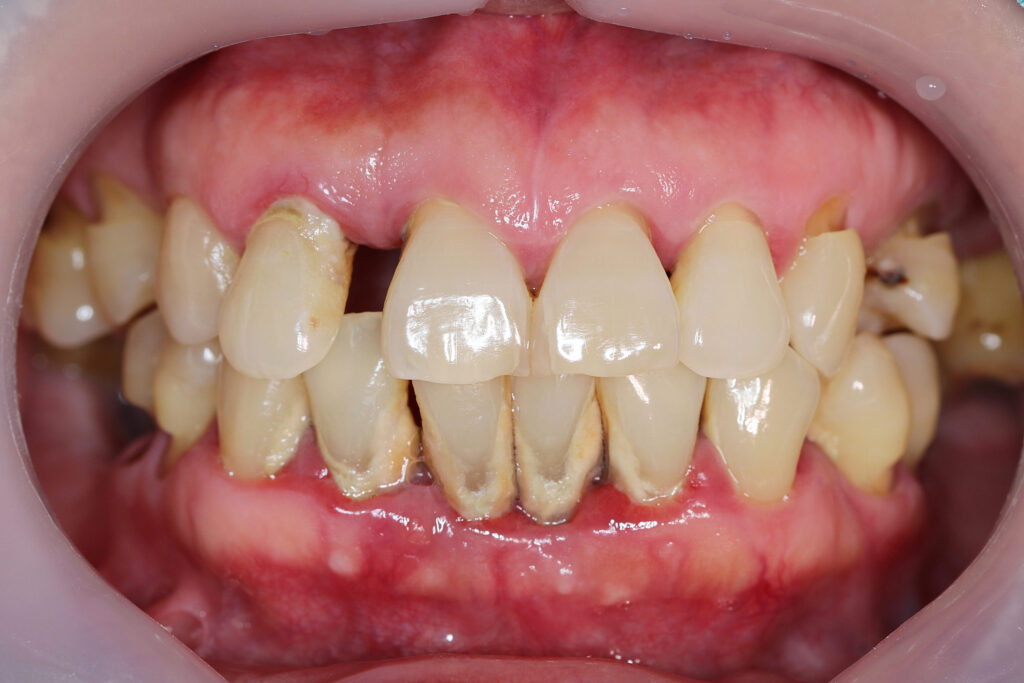
‘Interdental Brush For Braces’ Tips
Are you one of the many people who wear braces? If so, then you know the importance of keeping your smile clean. But did you know that there is a special brush specifically designed for braces users? Called ‘interdental brush for braces,’ this small but mighty tool can make a big difference in keeping your smile healthy and sparkling.
In this blog post, we’ll discuss ‘interdental brush for braces’ tips and how it can help keep your smile looking great. So if you’re ready, let’s get started!
What is an interdental brush?
The interdental brush looks like a pipe cleaner with small tufts of bristles. The bristles are designed to clean the tiny spaces between teeth and the wires that hold them in place. Using an interdental brush will help you keep your smile clean and healthy while wearing braces. These brushes are small and designed for cleaning areas that a conventional toothbrush cannot reach.
What are some benefits of using an interdental brush?
Interdental brushes are a great way to maintain a clean smile and avoid gum disease. They fit between braces and your teeth wires and remove plaque and food debris. You can also use oral irrigators, which shoot a high-pressure stream of water onto your teeth.
An interdental brush is an excellent alternative to flossing; it is easier to reach all the interdental spaces between teeth. You can also use an interdental brush to clean the brackets and wires on your braces. They’re relatively inexpensive and will last several weeks if you use them regularly.
Importance of interdental brushing
When it comes to oral care, most people focus on brushing their teeth and occasionally flossing. However, interdental brushing is another important step that often gets overlooked. Interdental brushing is cleaning the space between your teeth, which is essential for keeping your mouth healthy. Here’s why.
Periodontal Disease
Periodontal disease is an infection of the gums that can eventually lead to tooth loss. It’s caused by bacteria buildup up plaque, and it’s a major problem—about 47.2% of adults over 30 in the United States suffer from some form of periodontal disease. Interdental brushing can help prevent periodontal disease by removing plaque from hard-to-reach areas that your toothbrush might miss.

Bad Breath
Bad breath, or halitosis, is often caused by food particles and bacteria trapped between your teeth. Not only is bad breath embarrassing, but it can also be a sign of gum disease. By interdentally brushing, you can remove the particles and bacteria that cause bad breath, leaving your mouth fresh and clean.

General Oral Health
Interdental brushing isn’t just about preventing gum disease or bad breath—it’s also important to maintaining general oral health. When you interdentally brush, you remove debris and plaque between your teeth, which helps keep your entire mouth clean and healthy. In addition, interdental brushing can help to stimulate your gums, which is important for keeping them strong and healthy.
As you can see, interdental brushing is essential to oral care. If you’re not already interdentally brushing, now is the time to start! And if you’re unsure how to get started, don’t worry—your dentist can help you find the right tools for the job.
How to Use an Interdental Brush?
1. Wet the bristles of your interdental brush in water.
2. Gently insert the brush into the space between your teeth.
3. Use a back-and-forth motion to remove plaque and debris between your teeth.
4. Rinse the bristles of your brush in water after each use.
5. Repeat this process for all of the spaces between your teeth.
6. Spit the water out after you have finished brushing all of your teeth.
7. Rinse your mouth with water to remove any remaining plaque and debris.
8. You should brush for two minutes at a time and ensure that you brush under the brackets.
Interdental Brush Size for Braces
Interdental brushes are available at supermarkets and pharmacies, but you should know the right size for your braces before purchasing one. If the brush is too big, it will be difficult to clean effectively and may even damage your teeth. If you are unsure of the right size, try a smaller one.
As interdental brushes come in various sizes, the smallest size is perfect for people with sensitive teeth. Try several different sizes until you find the perfect one for you. Also, you may need different brushes for different parts of your mouth, such as the back teeth. If unsure, ask your dentist or orthodontist for a recommendation on the right size.
Interdental brushes are designed to clean the space between your teeth and gums. A metal wire holds the filament in place and is bent and angled so it can easily maneuver around braces. Some interdental brushes are disposable, while others come with a handle that you can use for a long time. However, you must remember to replace the brush head as soon as it starts to look wavy.
How Many Times to Use Interdental Brushes?
Dental professionals recommend interdental brushing for people suffering from periodontal disease. Interdental brushes are small brushes that clean in between teeth, where plaque and tartar often build up. But how many times should you use interdental brushes? Let’s take a look.
The answer may surprise you, but there is no one-size-fits-all answer to this question. The number of times you should use interdental brushes depends on the severity of your periodontal disease. For those with mild periodontal disease, once a day may be enough. However, for those with more severe cases, multiple times a day may be necessary.

Ideally, you should brush for at least two minutes each day. Brushing with an interdental brush is particularly important because it can reach between the wires of braces. Once you have finished brushing, floss and rinse your mouth thoroughly, and replace your interdental brush when it becomes worn.
In general, it is best to consult your dentist or dental hygienist to get an idea of how often you should use interdental brushes. They will be able to assess the severity of your case and give you specific recommendations. Remember, the goal is to remove plaque and tartar from your teeth so that your periodontal disease does not worsen.
Best interdental brush for implants
Flossing with the right interdental brush for implants will keep plaque and debris from collecting between the teeth. Choose a nylon-coated interdental brush, as these tend to slide more smoothly between teeth. Interdental brushes are also safer than metal brushes, which can damage dental implants.
You can use an interdental brush that comes with a small handle, and you can use it to brush around the side of your teeth. This brush is also great for cleaning between teeth where gums and implants meet. These brushes also work well on crowns and implants.
Interdental brushes for dental implants are available as manual or electric toothbrushes. It is important to select a brush with soft bristles and brush for two minutes every day. Make sure to brush every exposed part of your teeth, and you should use toothpaste without abrasive ingredients. Avoid toothpaste with baking soda or sodium fluoride, as these products contain ingredients that can damage dental implants.
It is important to follow the instructions provided by your dental surgeon for proper oral care. In addition to brushing your teeth twice daily, you should use dental implant-specific floss to keep them clean and firm.
How do you keep interdental brushes from bending?
To keep your interdental brushes from bending, you’ll need to be careful when inserting them into your mouth. Make sure you’re not pushing too hard, and be gentle when moving the brush around your mouth. You may also want to try using a different type of brush if you find that the ones you’re using are bending too easily. There are plenty of options, so experiment until you find one that works best for you.
Do you put toothpaste on interdental brushes?
Yes, you can put toothpaste on interdental brushes. However, it is not necessary to do so. You may find that the toothpaste makes it more difficult to insert the brush into the interdental space. If you decide to use toothpaste, ensure it is a non-abrasive variety.
An interdental brush for braces is a great way to keep your smile despite periodontal disease. Be sure to choose a soft-bristled interdental brush so that you do not damage your braces, and follow the instructions on how to use it so that you do not damage your teeth or gums. With regular brushing and flossing, plus using an interdental brush for braces, you can keep your smile healthy and sparkling!
>>> Keep reading if you want to know more about ‘dental hygiene.’
Leave a reply